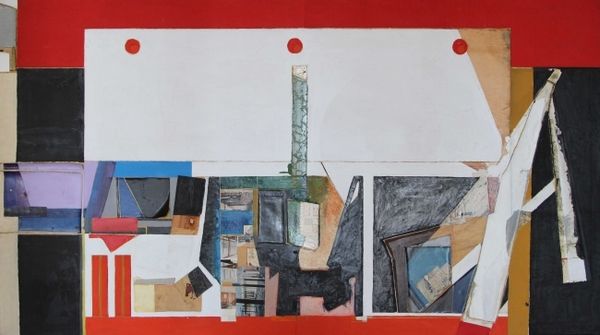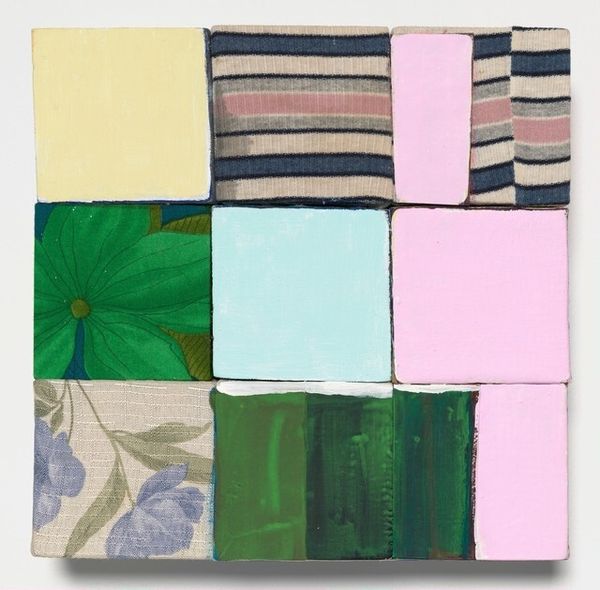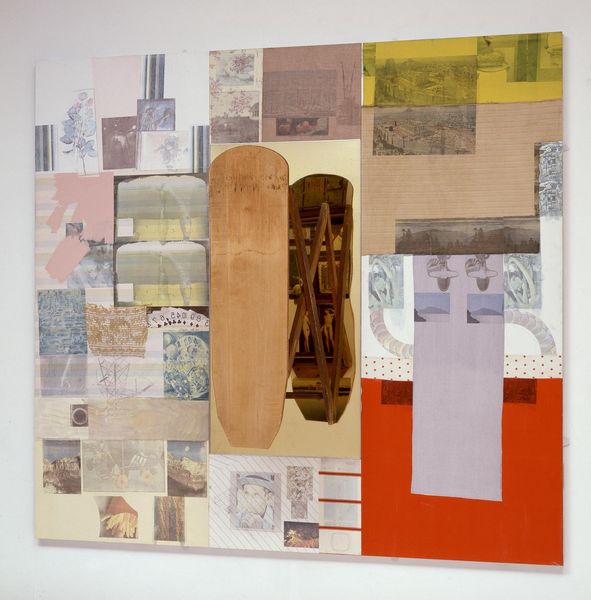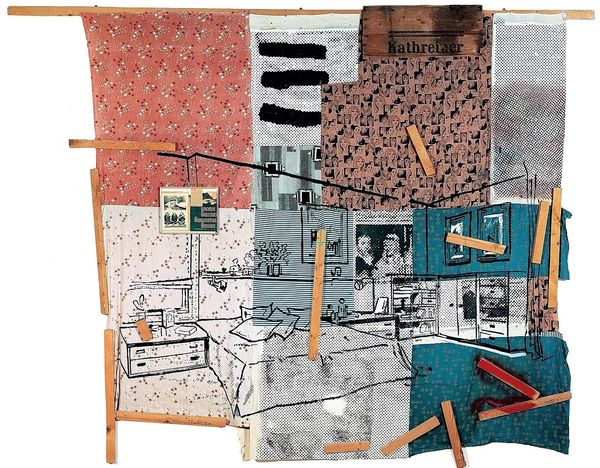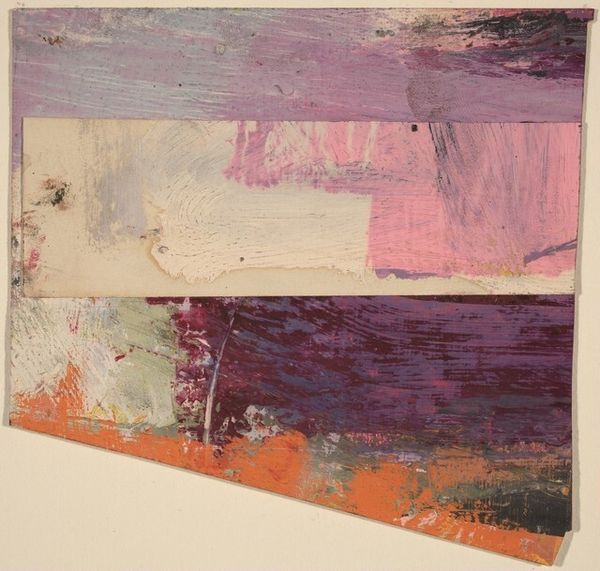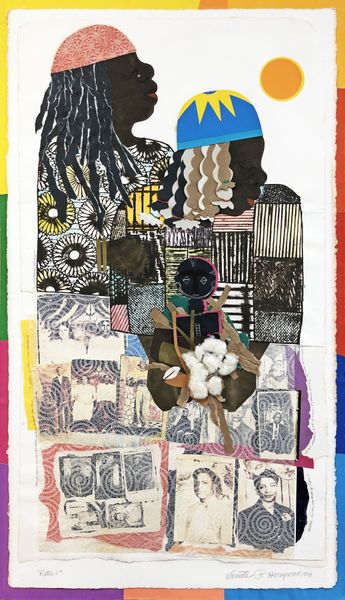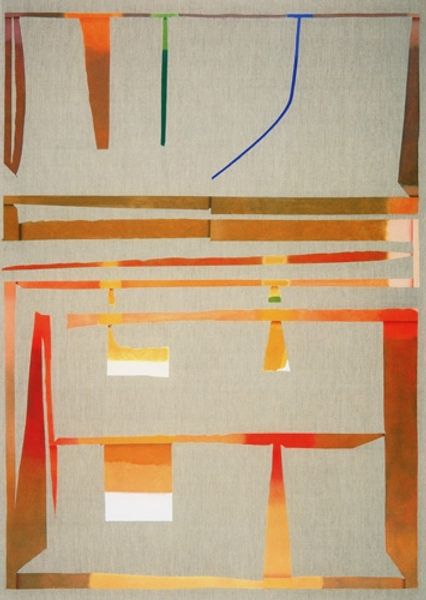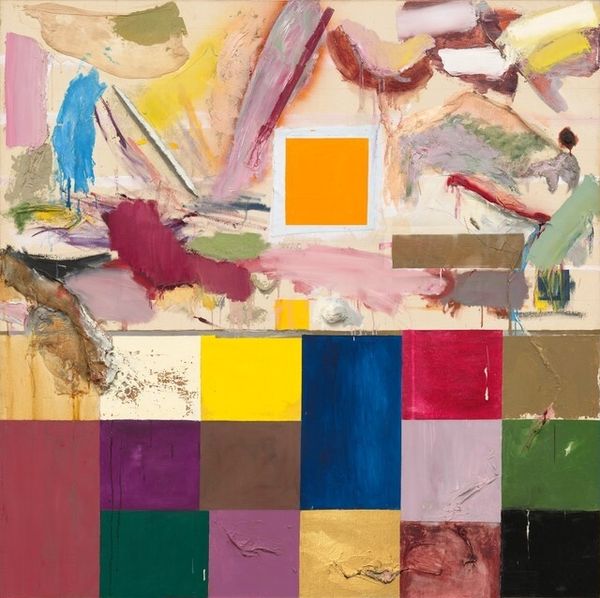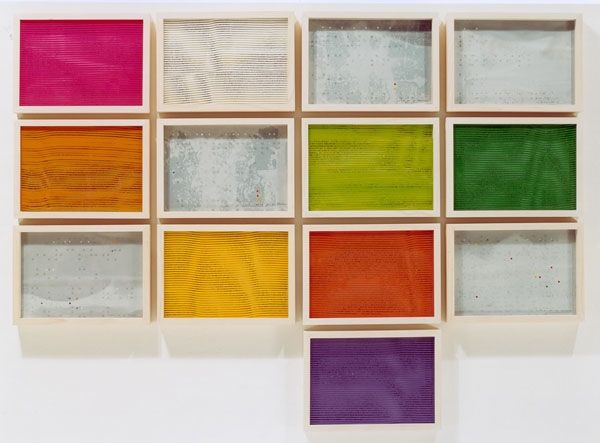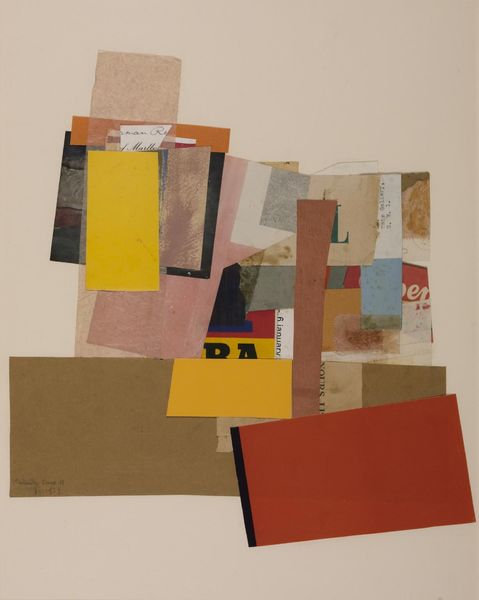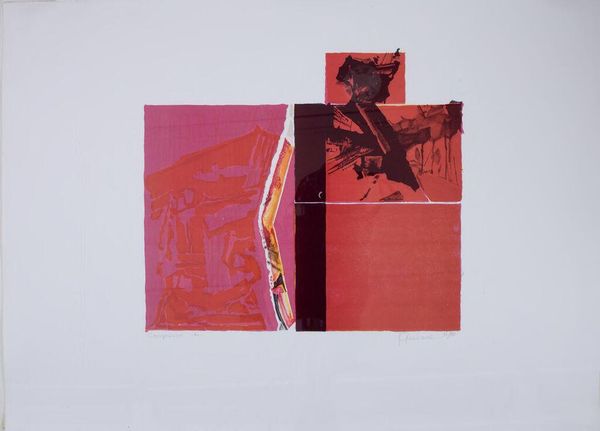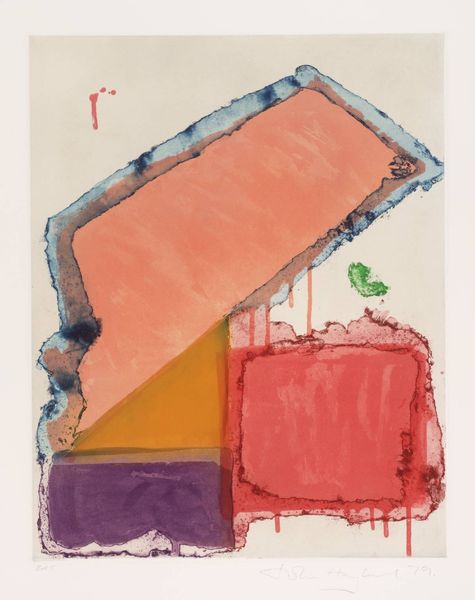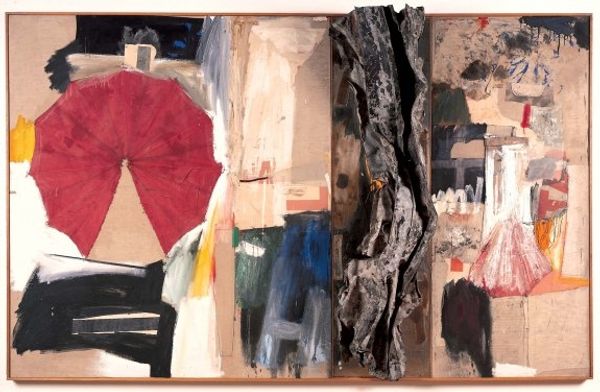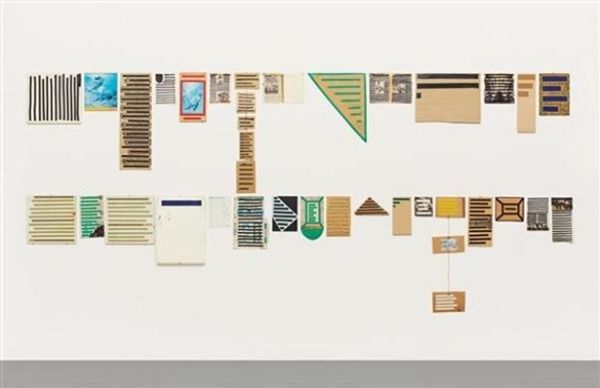
#
neo-dada
#
black-mountain-college
Dimensions: section size (each of 3 sections): 243.8 x 94 cm (96 x 37 in.) section size (triangular-shaped section): 243.8 x 66 x 66 cm (96 x 26 x 26 in.) overall size: 243.8 x 346.7 x 66 cm (96 x 136 1/2 x 26 in.)
Copyright: National Gallery of Art: CC0 1.0
Curator: Alright, let’s discuss Robert Rauschenberg's "Doric Circus," created in 1979. It’s a mixed-media assemblage, quite representative of his eclectic approach. What are your initial impressions? Editor: Visually, it’s chaotic yet strangely balanced. The colors are muted, except for that vibrant red section. It evokes a sense of playful construction, like a child's collage project grown into a complex statement. Curator: Rauschenberg often blurred the lines between painting and sculpture. This piece is a perfect example. The juxtaposition of found objects, collage elements, and acrylic paint forces us to reconsider traditional definitions of art making. What are your thoughts on that? Editor: I think his deliberate use of "low" materials elevated within a fine art context really democratizes the space. Rauschenberg's aesthetic embraced the everyday, incorporating mass media images and common textiles, in essence reflecting on American consumer culture and challenging elitist views on art. Curator: Precisely. Looking at the various textures and the layered composition, it’s evident that Rauschenberg’s process was integral to the final product. He didn't just aim to represent; he aimed to present materials in a new light. Editor: And by doing so, I feel he was engaging in a kind of visual activism. Appropriation can be a powerful tool to dismantle existing hierarchies. It’s almost like he's giving discarded objects a new voice, a platform to challenge dominant narratives. Curator: Yes, I see that. There is definitely an aspect of reclamation present, both materially and conceptually. Thinking about how he sourced these disparate elements and integrated them—there's a distinct artistry there, pushing boundaries on production of art. Editor: Ultimately, I find this work quite powerful. It reminds us to question the systems around us, particularly those concerning value, production, and identity. Curator: For me, "Doric Circus" showcases Rauschenberg's knack for elevating the mundane, turning it into something beautiful and thought-provoking. Editor: I couldn’t agree more. It’s a vibrant reflection on society and a powerful reminder of art's potential for commentary.
Comments
No comments
Be the first to comment and join the conversation on the ultimate creative platform.
